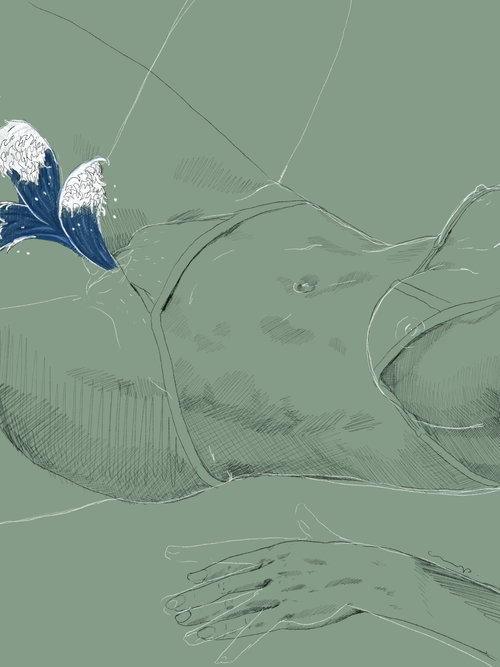Meet URL Resident Artist Marianna Pasaret
“I want to share the way I view the world with other people.”
Below, artist Marianna Pasaret talks about her process, compares digital sketching to traditional drawing, and discusses her latest project, THE HEART. Look out for her work at our December 13 meet.
How do you know you’re an artist (besides the obvious)?
As cheesy as this may sound, every moment is a movie for me. I sometimes doze off and stare into my surrounding environment envisioning people duplicating as they walk past me or their shadows turning colors and then forming a path behind them. I’m always making something in my head and I know that I want to share the way I view the world with other people. I know that I’m an artist because I find the way to translate these thoughts to something physical that others can see and touch.
Tell us about your process, from conception to execution.
I have a small notebook I carry with me almost everywhere I go where I like to write down random thoughts and dreams. Usually when I’m out, I try and appreciate little things and write them down. I tend to draw most late at night so when I feel inspired, I go through my notebook and try and focus on a certain moment or feeling. Once I’ve found the idea that I want to focus on, I pick a song or an artist and I pretty much just listen to them on replay until I feel that a work is finished.
What about the digital sketch format inspires you? What does this medium allow you to do that traditional sketching doesn’t? Vice versa?
Digital sketching allows me to go anywhere and use any medium I want. It allows me to try different looks to a piece; I can change colors/objects in it without any consequences. It’s also very quick to use, so when I don’t have a lot of time it’s rewarding to be able to create something in one hour or so. However, traditional sketching gives you a certain randomness that a computer can’t. Digital sketching can sometimes feel staged or static.
With the digital sketches, you use a lot of layering of images and then of your sketch. Where are you sourcing those images? Do they have meaning to the work besides aesthetics?
The layering in my digital sketches comes after I draw. After I finish my sketch, I go back on some of my favorite artist’s work and either try and replicate their brush work or use a part of their actual work in my drawing. Each of them have different meaning for the drawings. In my female portraits, I would study works from other artists and would try to pair them with the woman I was drawing or simply how I felt when I was working on her portrait. The meaning is more personal and describes either how I view the individual I drew or who I was when I drew them.
What was the impetus for THE HEART? Most of your work is done in a digital sketch format; why the leap in medium?
The Heart has been a project I have wanted to make for over a year now but I never had the space or time to actually execute it. Sketching has always been my comfort zone; it’s fairly easy and enjoyable for me. However during the summer I began to question what I wanted to do as an artist in the future and I had identified the heart to be present in many of my works. I wanted to test myself as an artist and see if I could create a project of that size by myself. It was a challenge for me.
Has creating THE HEART affected your use of the heart symbol, or the anatomical heart, in your work?
Absolutely, since the project was going to be focused on just a heart I needed to really dive in and understand what it stood for so by knowing more about it I could apply it in more ways. After working on it for several months, it's almost become a symbol of my growth too.
How has your work evolved since you first began to the present? How do you foresee it evolving in the next few years? Are there any constant themes?
When I first began to draw I would refuse to work with anything but black and white. All my pieces were in ink. My first drawings were not realistic at all but it was because I didn’t think I was capable of making portraits. I’ve always wanted to challenge myself since I get bored pretty fast, so portraits became my first challenge. From ink i went to graphite, then to gouache, digital (still in black and white; it wasn’t until recently that I started adding color) and finally, sculpture in silicone. No matter how many times I switch the media, the woman has always been present in my works. I’ve always asked myself why; I used to go to Catholic school when I first started drawing and I enjoyed getting a reaction out of people when they saw my art so the naked female body would do that. Afterwards it became more of an appreciation of it and as I grew it was a form of empowerment for me as a woman.




